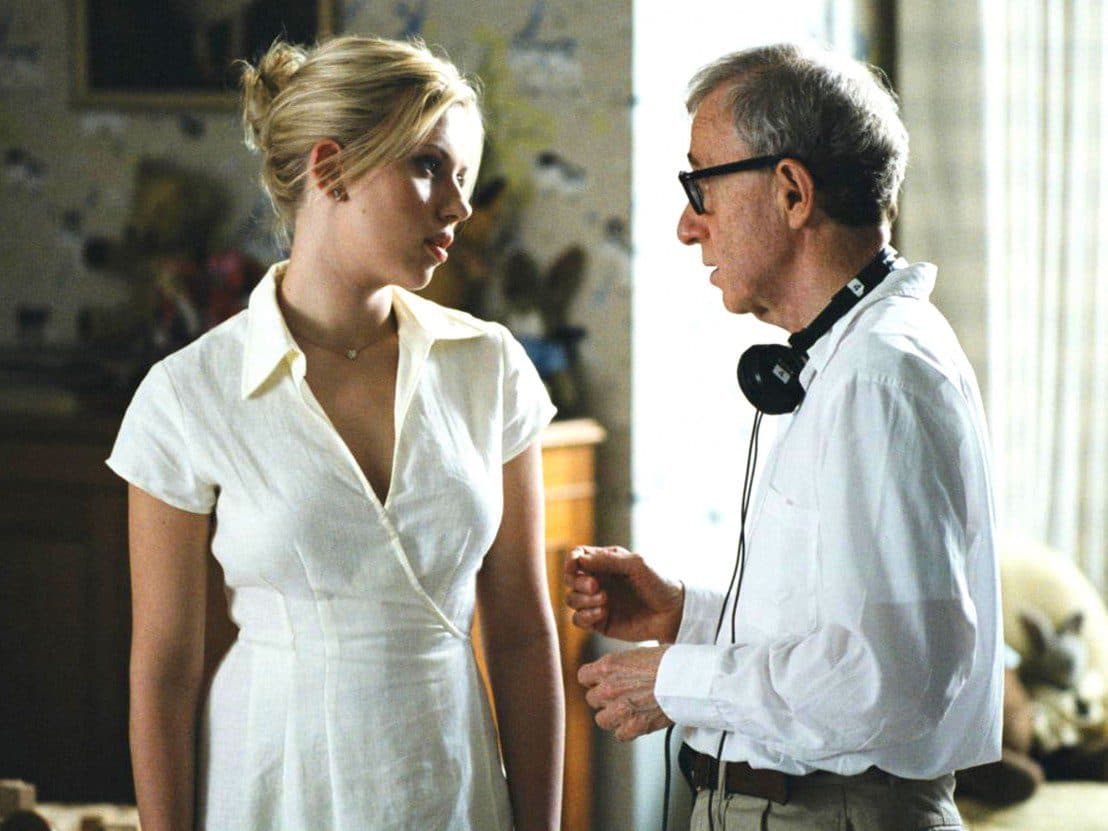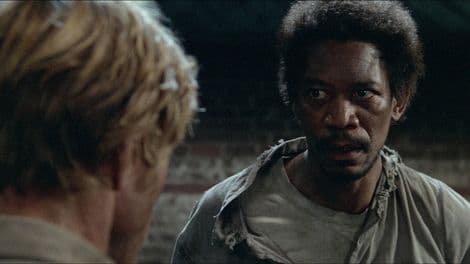From Raggedy Dolls to Raggedy Nightmares: Unpacking the Raggedy Universe
Ever heard the word "raggedy"? It brings a mix of feelings. Maybe nostalgia or warmth from childhood. If you scare easily, it might trigger a chill. The term evokes images of worn edges and beloved wear. It sits at the center of many cultural references, from comforting kids' characters to eerie horror figures. Let's explore this thread through movies, folklore, and the odd mix of both.
Raggedy Man: A World War II Era Drama
First, we look at the film Raggedy Man from 1981. Sissy Spacek stars in it. Before picturing dolls coming to life, wait a moment. This "raggedy" story is set firmly in World War II-era Texas.
Small Town Texas Hardships
Spacek plays Nita Longley, a divorced mother of two. She faces challenges of small-town life amid a war. Picture being a telephone operator during such times. Divorce back then? Nita was not popular. Gossip spread like wildfire, and finding good company was hard.
A Sailor's Brief Respite
Teddy, played by Eric Roberts, is a sailor on leave. He offers a spark of hope. Nita finds a friendly face among critical gazes. Their bond gives Nita joy. Everything looks brighter for a while. But, just as comfort creeps in, life changes. Duty calls for Teddy, and he's sent off to war, leaving Nita to face solitude again.
Filming Locations: A Mystery
Finding the exact filming sites for Raggedy Man is tricky. It's like searching for a needle in a haystack. Details about the small-town Texas backdrop vanished over time or aren’t available in our resources. Maybe a cinematic Easter egg hunt awaits dedicated fans.
Raggedy Ann and Andy: From Storybooks to Toy Hall of Fame
Shifting gears, let's discuss something more... cuddly. Or that's how it appears. We focus on Raggedy Ann and her brother, Raggedy Andy. These yarn-haired dolls symbolize classic Americana. Yet, these rag dolls hold deeper stories.
The Genesis of Raggedy Ann
Every beloved character has a creator. For Raggedy Ann, this person is Johnny Gruelle. While not everyone may know him, he holds a significant place in children's literature and toy design. Gruelle gave us this "adorable doll" first seen in his 1918 book, Raggedy Ann Stories.
Marcella's Rag Doll Inspiration
The creation story of Raggedy Ann is heartwarming. In 1915, Gruelle's daughter, Marcella, gifted him a plain rag doll. Picture a simple, faceless doll ready for a personality. Gruelle, with artistic vision and father’s love, created her face and named her Raggedy Ann. Just like that, a legend emerged.
Some stories say Gruelle found a faceless doll in his mother’s attic before Marcella came along. However, the popular tale centers around Marcella and her rag doll. This adds warmth to her story.
Raggedy Andy Joins the Family
To round out the family, Raggedy Ann gained a brother. In 1920, Gruelle introduced Raggedy Andy in Raggedy Andy Stories. He became known as "the Little Rag Brother of Raggedy Ann." Together, they formed a charming sibling duo.
A Prolific Creator
Gruelle didn't stop at one doll. He crafted many works around Raggedy Ann and Andy, building a literary and toy universe. His commitment secured their legacy in culture.
Patenting a Doll and Trademarking a Name
Johnny Gruelle showed business savvy. He didn’t merely create; he protected his work. He sought a design patent for the doll and applied for a registered trademark of "Raggedy Ann" on June 17, 1915. Talk about safeguarding your creations!
Design Evolution: The "Patent" Raggedy Ann
Early Raggedy Ann dolls are often termed "Patent" Raggedy Anns. They bear a unique stamp: "Patented Sept. 7, 1915." Collectors value these vintage dolls highly. They sports machine-stamped faces with smiles, outlined noses, raised eyebrows with lashes, and rosy cheeks on round heads. A doll with dark brown hair and this stamp could fetch over $1,000 from the right collector.
Meet the Raggedy Gang
Raggedy Ann: The Heart of Yarn and Stitches
Now, let’s discuss Raggedy Ann herself. The typical 16-inch version is easy to identify: soft, red yarn hair with that famous topknot, flat black safety eyes filled with curiosity, and an embroidered face exuding sweetness. Her nose is a simple triangle, defining charm.
A smaller 12-inch version also exists. It has noticeable changes – larger eyes, two bows on her apron rather than one, and no bloomers bows. This is like a special edition in the doll world.
Don't forget the heart. Raggedy Ann isn’t mere fabric; she has a supposed candy heart sewn inside. This symbolizes love, leading many dolls to carry a printed heart on their chests proclaiming, "I Love You." Sweet, plain yet meaningful!
Raggedy Andy: The Brotherly Sidekick
Now we turn to Raggedy Andy, introduced in 1920. He is described as Raggedy Ann’s "feisty little brother." He adds energy and fun to the Raggedy world.
Marcella: The Real-Life Muse
Lastly, remember Marcella, Johnny Gruelle’s daughter? She is more than just an inspiration. She forms the core of Raggedy Ann's narrative. That simple rag doll she gifted her father sparked an entire cultural movement.
Raggedy Mania: Popularity and Cultural Footprint
Marketing Magic: Books and Dolls Take Off
Raggedy Ann and Andy became more than simple characters; they turned into marketing powerhouses. "The books and dolls became a massive success," and their wholesome, imaginative nature resonated widely.
Toy Hall of Fame Royalty
Their importance is clear. Raggedy Ann joined the National Toy Hall of Fame in 2002, followed by Raggedy Andy in 2007. Think of it as the Oscars for toys, affirming their status as timeless classics.
Unexpected Symbolism: Anti-Vaccination Adoption
Now for a strange twist. Raggedy Ann, of all characters, has been claimed as a symbol by the anti-vaccination movement. Indeed, it's ironic. This cheerful doll became linked to skepticism and misinformation. The contrast is heavy, especially due to the sad backstory we will explore soon.
Media Stars: Cartoons and Beyond
Beyond books and dolls, Raggedy Ann and Andy appeared in numerous media forms, including cartoons. A lengthy animated short from the past showcased their adventures, solidifying their presence in culture.
Shadows and Spooky Stories: Darker Sides of Raggedy
The 1970 Doll Incident: A Real-Life Horror Story?
Things shift toward the eerie here. While Raggedy Ann usually symbolizes innocence, a 1970 occurrence darkened her image. A 28-year-old nursing student received a Raggedy Ann doll from her mother. Strange events followed. The doll allegedly moved on its own and even left notes for the student and her roommate. Sounds familiar? We are nearing the realm of Annabelle now.
Violence in Playtime?
Additionally, many claim Raggedy Ann dolls unintentionally encouraged violent play among children. The reasoning? Their softness made them suitable for rough handling—beating, throwing, soiling,
Even "hanging," according to one rather grim assessment. Dolls need a gentle nature.
Marcella's Tragic Fate: A Vaccination Tragedy
Marcella, the inspiration for Raggedy Ann, tragically died due to an infected vaccination. The anti-vaccination movement has adopted a symbol with a namesake who died from a vaccine complication. The disconnect is staggering. This reminds us of painful realities behind whimsical creations.
Raggedy in Museums: Preserving the Legacy
Johnny Gruelle Raggedy Ann and Andy Museum
For those eager to explore Raggedy Ann and Andy, there's a museum: the Johnny Gruelle Raggedy-Ann and Andy Museum. It celebrates the creator and dolls, a testament to their appeal. The document lacks location details, leaving us to ponder where this treasure trove might be.
The Occult Museum and Annabelle: A Tangential Raggedy Tale
Now, a different museum experience. The Occult Museum, previously in Monroe, Connecticut, housed an infamous Raggedy Ann doll: Annabelle. This place was created by Ed and Lorraine Warren, investigators of paranormal tales. Sadly, it's closed now, adding mystery to Annabelle's saga.
Sibling Bonds or Sweethearts? Raggedy Relationships
Brother and Sister or... More?
In the original books, Raggedy Ann and Andy are siblings. Brother and sister, end of story. Animation thrives on creative liberties. In one cartoon short, Fleischer Brothers reimagined them as "boyfriend and girlfriend." A surprising twist! Characters can be reinterpreted in various media.
Raggedy Riches? Collectible Value
Vintage Doll Hunting: Identifying Original Raggedy Anns
For collectors, vintage Raggedy Ann dolls can be valuable finds. Look for the "Patented Sept. 7, 1915" stamp on the torso. Examine faces – machine-stamped features and specific details mark early dolls. Dolls with dark brown hair made by Volland are particularly valuable, sometimes fetching over $1,000.
Market Value: Raggedy Price Range
The good news is you can find Raggedy Ann collectibles without breaking the bank. Generally, you can expect prices from $25 to $350 for most collectibles. Casual admirers and serious collectors alike can find Raggedy treasures.
Decoding "Raggedy Ann": More Than Just a Name
What Does "Raggedy Ann" Mean?
According to the Longman Dictionary of Contemporary English, "Raggedy Ann" refers to a type of rag doll. It remains a popular children's toy in the US. Key features include: large round face, red cheeks, and hair from red wool. Simple and descriptive.
Name Origins: A Poetic Blend
Curious about "Raggedy Ann"? Johnny Gruelle drew inspiration from poetry. He fused "Raggedy" from James Whitcomb Riley's "The Raggedy Man" with "Ann" from "Little Orphant Annie." A literary portmanteau, if you will. On June 17, 1915, he trademarked the name, marking its place in doll history.
Annabelle Doll: When Raggedy Turns Really, Really Creepy
Prepare for a sharp turn into paranormal horror. Annabelle, the Raggedy Ann doll, is synonymous with demonic possession and terrifying tales. This isn't your grandma's Raggedy Ann.
The Real Annabelle: More Plain Than Porcelain
The real Annabelle doll is a Raggedy Ann doll. Yes, it's the same as we've been discussing. The real doll has red yarn hair, floppy limbs, and a plain fabric face. She's described as "innocent-looking," a far cry from the menacing porcelain doll in movies.
Haunted History: Alleged Possessions and Paranormal Activity
Don't let her appearance fool you. The real Annabelle doll is said to be haunted. The Warrens claimed she had an "inhuman spirit." Stories involve alleged hauntings and terrorizing young women before the Warrens intervened. They're about a doll that allegedly moved, left notes, and caused chaos.
The Warrens' Role: Paranormal First Responders
Ed and Lorraine Warren became central figures in Annabelle's story. They were called to handle the haunted doll. They moved Annabelle to their Occult Museum in 1970, hoping to contain whatever entity was attached. Tony Spera, their son-in-law, maintains possession of the infamous doll.
Annabelle's Current Residence: Under Lock and Key (Literally)
Where is Annabelle now? Still with Tony Spera. Though the Occult Museum is closed, Annabelle remains well-secured. This situation highlights our fascination and fear surrounding this Raggedy Ann doll.
Annabelle on the Big Screen: Hollywood Horror
Movie Annabelle: Porcelain Terror vs. Raggedy Reality
Now, let’s discuss movies. The Annabelle films depict her as a different doll. The movie features a porcelain doll that is creepy, unlike the real one. The on-screen Annabelle is frightening, wide-eyed, more like an antique porcelain doll. This differs from the real Raggedy Ann.
"True Story" Inspiration: Warren Case Files
Are the Annabelle movies based on real stories? Yes, but in part. The films draw from Ed and Lorraine Warren's case files regarding the supposedly haunted Raggedy Ann doll. There's some truth, heavily fictionalized.
Creative License: Hollywood-ized Horror
The films take significant creative liberties. The plot of the three Annabelle movies is fictionalized but nods to the Warrens' account. Think of it as "inspired by" rather than documentary-style. The haunted doll idea remains, but the narrative is made more thrilling.
Why No Raggedy Ann in the Movies? Visual Impact and Legalities
Why change the doll? Two reasons: visual impact and legal issues. The "Annabelle" doll isn’t shown as Raggedy Ann because filmmakers sought a visually terrifying image. A standard Raggedy Ann doll seemed too innocent and non-threatening. Plus, copyright issues may have played a role.
The Dark Tale of Annabelle: A Gift Gone Wrong
Origins of Unease: A 1970s Gift
The Annabelle story began innocently enough. In 1970, a student nurse received a Raggedy Ann doll from her mother. A harmless gift? Not quite. This doll was destined for a different type of fame, or infamy, depending on your view.
Strange Happenings: Moving Dolls and Mysterious Notes
Strange events followed Annabelle's arrival. The student and her roommate noticed odd occurrences, including notes written childlike and the doll moving itself. Notes and a moving doll? Major red flags! This wasn't an ordinary childhood toy.
Warrens to the Rescue (or Museum?): Containment, Not Destruction
The Warrens were called to investigate bizarre events surrounding Annabelle. They determined the doll was "demonically possessed" and moved her to their museum. Why not destroy it? According to the Warrens, "destroying the doll wouldn’t eliminate the evil spirit." It's just a vessel.
Entity," it could find a new host. Therefore, containment was the only option. Annabelle now resides permanently in a glass case. She is a chilling exhibit in the Warrens' macabre museum.
Eric Roberts: More Than Julia's Brother
Now, let's return to actor Eric Roberts. We met him earlier with Raggedy Man. Eric Roberts invokes a range of reactions. Some think, "Oh, Julia Roberts' brother!" Others ponder his many films. He is a cinematic force, and his story is compelling.
Filmography Overload: Hollywood's Most Prolific Actor?
Eric Roberts is "Hollywood's Hardest Working Actor," with 391 acting credits over the past ten years. He is the most prolific actor today. 391 credits in a decade is not just prolific; it is almost superhuman. He is everywhere and seemingly works non-stop.
Runaway Train: A Career Highlight
Among this vast filmography, some roles shine. One acclaimed performance is in Runaway Train. He was nominated for an Academy Award for Best Supporting Actor for his role as escaped convict Buck in Runaway Train. An Oscar nomination is no small achievement.
Awards Beyond the Oscars: Theatre World Recognition
His accolades extend beyond film. In 1987, he won a Theatre World Award for his Broadway debut in Burn This. This award recognizes outstanding debut performances on Broadway and showcases Roberts' talent across different mediums.
Family Ties: Julia and Emma Roberts
The Roberts family is Hollywood royalty. Eric’s relationship with Julia is documented and sometimes complicated. As both their careers grew, they even shared the screen. Now, they maintain relationships with each other’s kids. Family in Hollywood is always fascinating.
Sibling Dynamics: Past Rifts and Present Relations
Their bond hasn’t always been smooth. In July 2024, Eric discussed his relationship with Julia on the Still Here Hollywood podcast. He noted they don’t often talk about one another. Past difficulties and rifts suggest a turbulent sibling dynamic. They navigated their relationship, even privately.
Emma Roberts: Daughter and Custody Battles
Eric Roberts is the father of actress Emma Roberts. His struggles with addiction had significant consequences. He lost custody of Emma due to this battle. This custody dispute put strain on his relationship with Julia, who sided with Emma’s mother Kim Cunningham. Real-life struggles exist behind Hollywood glitz.
Health Hurdles: Speech and Mobility
Eric faces health challenges too. He has a speech impediment from childhood stuttering. Throughout his career, he managed this. As a child, he memorized school passages to cope. His father noticed he spoke more fluently when memorizing lines, possibly prompting him toward acting.
Mobility Issues: Wheelchair Use and Hip Injury
Recently, mobility issues emerged. In 2018, Eric Roberts was seen in a wheelchair at Los Angeles Airport. The precise cause is undisclosed but is believed to relate to a hip injury from years of physically demanding work. Action roles take their toll, and Roberts’ wheelchair use highlights these demands.
Personal Demons: Drug Addiction and its Toll
Eric has been candid about past drug struggles. His addiction affected his relationship with Julia Roberts and led to the loss of custody of Emma. He admitted it was "dangerous to be around me" then. His cocaine addiction during the custody battle contributed to his relationship with Julia breaking down.
Stephen King's "Cell": Raggedy Man as Zombie Antagonist
Now, let’s switch to literature and Stephen King's mind. In his 2006 novel Cell, King introduces "The Raggedy Man." This character is not a cuddly doll or friendly sailor; he embodies pure nightmare fuel.
Plot Overview: The Pulse and Cell Phone Mayhem
Cell revolves around "the Pulse." It’s a mysterious phenomenon turning cell phone users into "violent, zombie-like creatures." Imagine chaos–civilization collapsing due to a corrupted signal through cell phone networks. King taps into anxieties about technology's dark side.
The Pulse's Source: Corrupted Code
The Pulse's cause is due to "a corrupted computer program that infects cell phones." The theory is a "computer worm has mutated the Pulse," still broadcasting through networks. It's techno-horror at its finest.
Clay Riddell: Witness to the Apocalypse
The story centers on Clay Riddell. He is a graphic artist on the cusp of success when the Pulse hits. He represents our perspective as chaos unfolds, navigating this terrifying new reality.
Themes of Technophobia: King's Tech Skepticism
Cell explores themes of "technophobia." Published in 2006, it reflects a time when cell phones were rapidly increasing. Anxieties about technology's effects grew widely. Interestingly, King did not own a mobile phone when Cell was published, adding a touch of irony.
The Raggedy Man's Role: Zombie Villain
The Raggedy Man is not just a zombie; he is "the main antagonist" in King's novel and its 2016 film adaptation. In this story, "raggedy" suggests decay and menace. This Raggedy Man represents pure horror, differing from friendly dolls.
James Whitcomb Riley: The Poet Behind the Names
Let's revisit James Whitcomb Riley, the poet who inspired "Raggedy Ann." Who was he and why are his poems influential?
Life and Career: A Beloved Poet
James Whitcomb Riley was a celebrated "poet and author," known for numerous beloved pieces. He wrote books like The Old Swimmin'-Hole and 'Leven More Poems. His work resonated deeply, earning considerable popularity.
Notable Works: Nostalgia and Childhood
Riley's titles often reflect nostalgia and childhood themes. His poems capture gentle views of life, resonating with many readers and solidifying his place as a beloved American poet.
Personal Life: A Bachelor Poet
Interestingly, "Riley never married." This detail adds to his personal story, though it may seem tangential to his literary legacy.
Legacy: Honored in Indianapolis
Riley's legacy is rooted in Indiana, especially Indianapolis. He is buried at Crown Hill Cemetery, where he is honored regularly on October 7th with a wreath-laying ceremony at his memorial tomb. He is a local legend.
Riley Hospital for Children: A Lasting Tribute
The most enduring tribute is the Riley Hospital for Children in Indianapolis, named in his honor. This institution represents his lasting impact and affection he inspired. When you hear "Riley," remember the poet behind Raggedy Ann and the hospital that carries his name.
Other Raggedy-Adjacent Tidbits
W.H. Auden: An Unexpected Marriage of Convenience
In an intriguing detour, the document mentions W.H. Auden. In 1935, he married Erika Mann, daughter of German novelist Thomas Mann. This marriage was convenient for her to gain British citizenship and escape Nazi Germany.













Responses (0 )